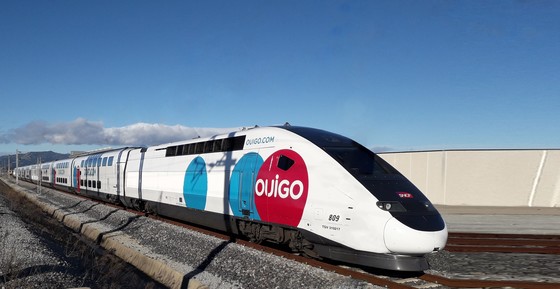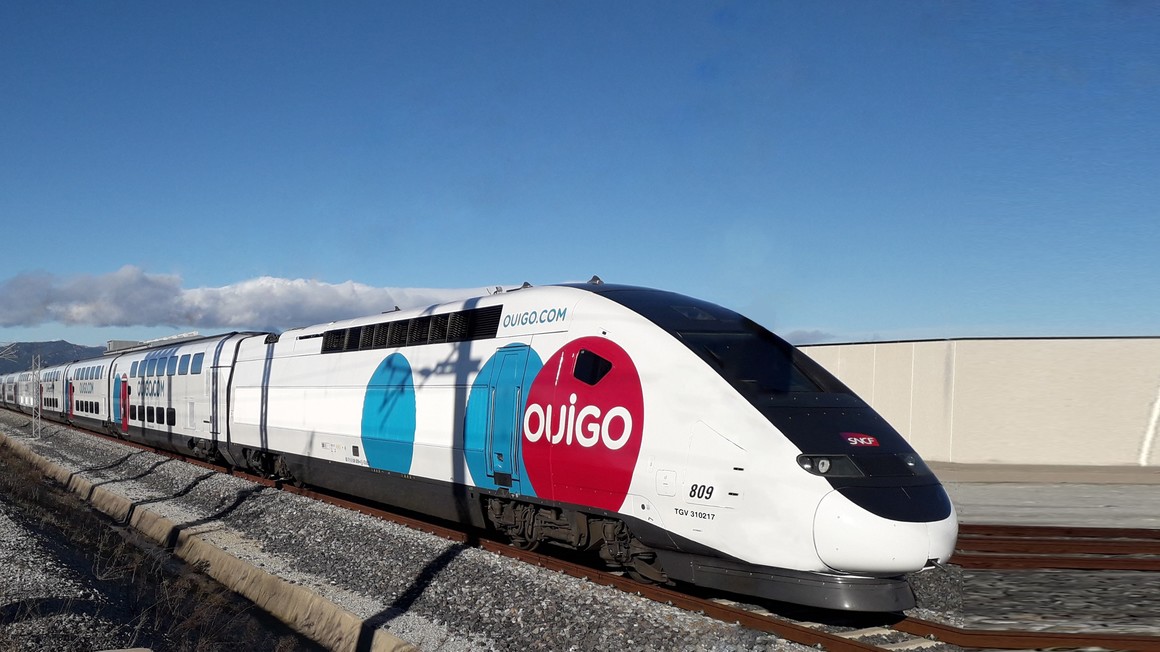
Euroduplex trains adapted by Alstom for the Spanish network are brought into service
Euroduplex trains adapted by Alstom for the Spanish network are brought into service

Press contact - Philippe Molitor
Philippe Molitor
Send an emailPress contact - Samuel Miller
Samuel Miller
Send an emailAn innovative project with SNCF, dedicated to the regions of Spain
7 May 2021 – Four Avelia Euroduplex trains from the SNCF fleet will enter commercial service on Monday 10 May 2021 on the Madrid-Barcelona route. They will be operated by OUIGO España, a local subsidiary of SNCF. The trains have been converted by Alstom and SNCF to run on the Spanish high-speed rail network.
Following on from these first four trains, 10 other trains are currently being converted by Alstom to serve several high-speed routes in Spain: initially, the Madrid-Valencia and Madrid-Alicante routes and subsequently, Andalusia (Madrid-Seville and Madrid-Malaga). OUIGO España will thus have a fleet of 14 trains for 5 destinations departing from Madrid: Barcelona, Valencia, Alicante, Seville, and Malaga.
During the conversion process of the trains, Alstom developed and deployed on-board signalling equipment architecture, necessary for rail traffic safety and performance, based on its digital ERTMS[1] solution Atlas. This solution ensures that Avelia Euroduplex trains are compliant and can be approved for Spanish infrastructures.
-
14Avelia Euroduplex trains
-
5destinations departing from Madrid: Barcelona, Valencia, Alicante, Seville, and Malaga
-
17months, the time needed to convert and approve the first four trains on the Madrid-Barcelona route
“The implementation of this project is further proof of the confidence international operators have in Alstom main line signalling system in Europe, while indicating our ability to guide these operators towards the success of their expansion plans in European rail markets that are open to competition.”
“This entry into commercial service marks another historic step for Alstom, which is committed to working alongside our customer SNCF”, explains Jean-Baptiste Eymeoud, President of Alstom France. “The implementation of this project is further proof of the confidence international operators have in Alstom main line signalling system in Europe, while indicating our ability to guide these operators towards the success of their expansion plans in European rail markets that are open to competition.”
The new signalling equipment architecture was developed and validated by Alstom's digital mobility experts in Saint-Ouen (France). The conversion of the power cars and train testing is being carried out at Alstom's Belfort site (in France), with the assistance of the component French sites in Villeurbanne (modification of the electronic equipment), Tarbes (modification of the wiring harnesses) and Le Creusot (adaptation of the on-board signalling sensors on the bogies).
The project is being led by Alstom's site in La Rochelle (France), which is in charge of transforming the passenger cars and assisting SNCF with the approval of the converted trains in Spain.
The teams of SNCF and Alstom share a common project workspace, as an integrated team, using innovative working methods to honour the ambitious schedule for commercial entry into service. The project was completed in a record time of 17 months, including design, industrialisation of signalling equipment and integration into the existing train.
Alstom™ and Atlas™ are protected trademarks of the Alstom Group
[1] European Rail Traffic Management System